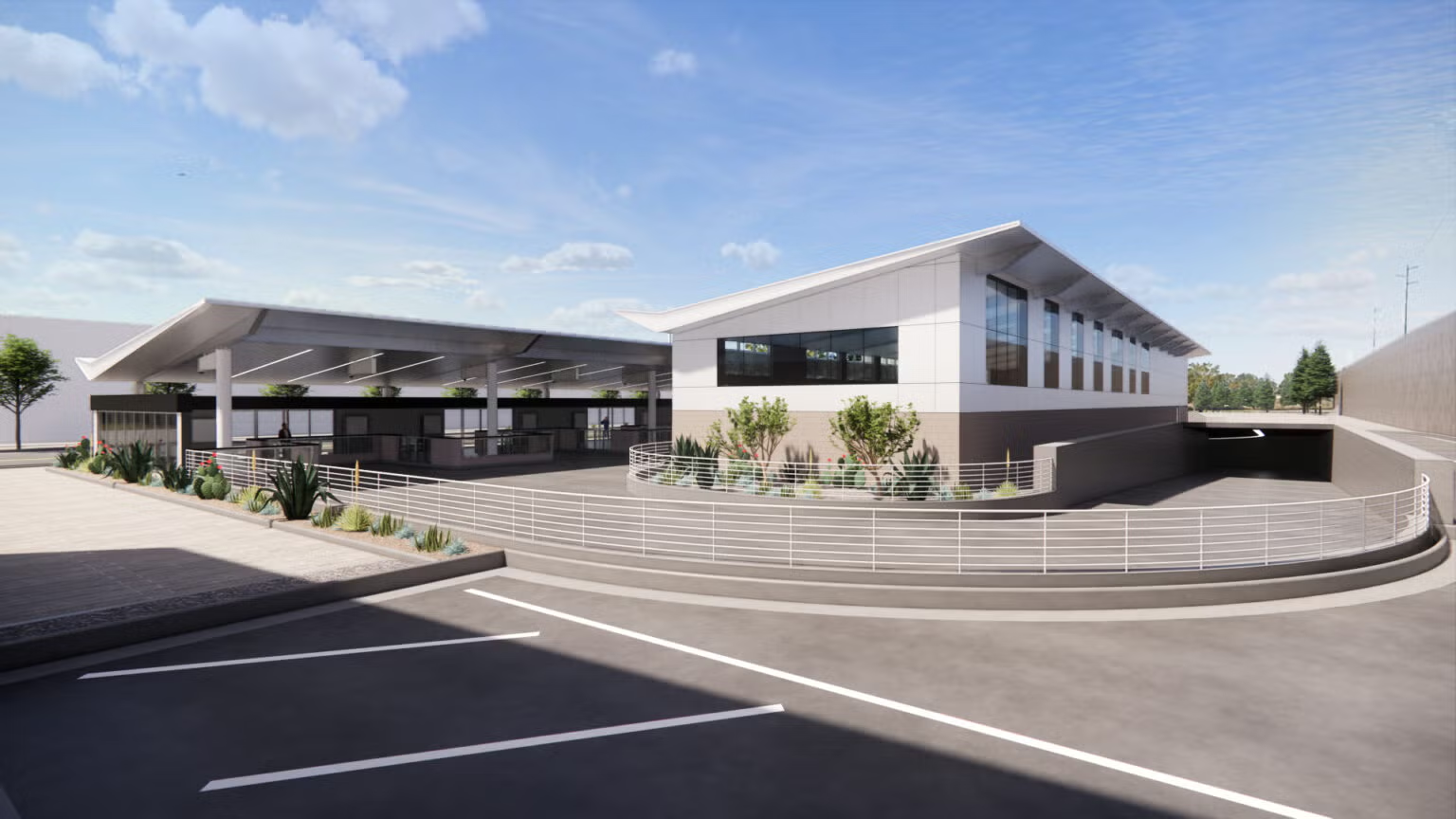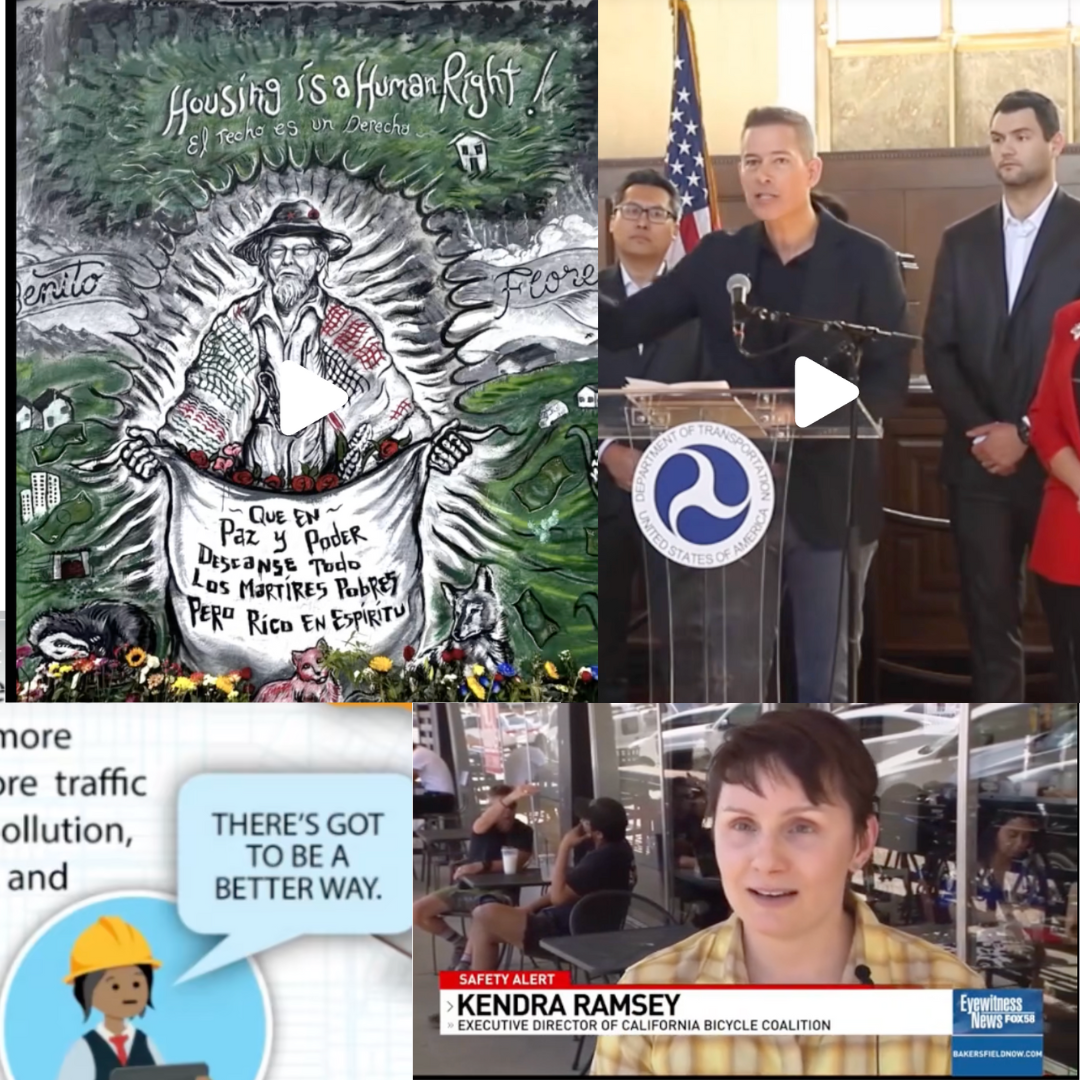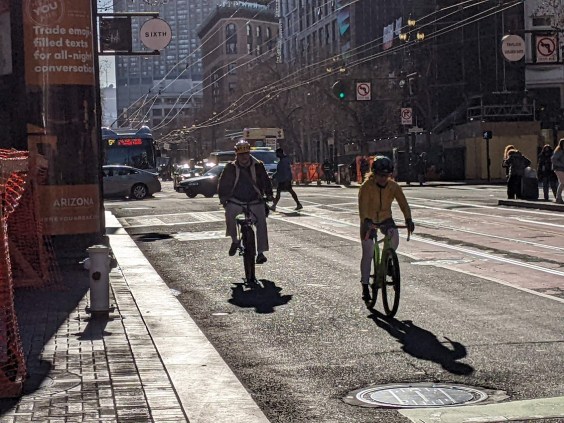In 2008, 2014, and 2018, the San Bernardino County Transportation Authority and Ontario International Airport studied options to connect the airport terminals to the Rancho Cucamonga Metrolink Station with either bus or rail. With the airport growing and the station soon also housing a stop for the West Valley Connector bus rapid transit service when it opens next year (and Brightline West High-Speed Rail) a 1.4 mile connector seems an obvious way to dramatically reduce future vehicle miles traveled in the area.
Rail and bus connections that once-made sense to planners were scrapped in 2019 when Elon Musk’s Boring Company submitted an unsolicited proposal to build one of its “Tesla Tunnels” instead.
Even though Musk’s proposal turned out to be vaporware, the idea of an autonomous vehicle tunnel stuck with SBCTA staff and board members. Given Musk’s sinking popularity, the Boring Company stepping away from the project may have helped save it as the agency continued forward with its own autonomous vehicle project instead of proven bus and rail technologies.
SBCTA staff have praised their plan for an autonomous on-demand vehicle tunnel as a “forward-thinking transit solution” and noted that the estimated price tag for the project, which advocates argue is too low, is less expensive than traditional approaches. The estimated cost of building the tunnel is $490 million. So far, the project has not been granted $1 from either the state or federal governments. There is an excellent chance that Musk’s “vision” may once again lead to delays, or even the death, of a needed transit project.
The SBCTA is scheduled to vote on approving the environmental study of the option at this Wednesday’s board meeting (agenda, Item 34), despite the document’s deficiencies as spelled out by advocates.
“We strongly urge the SBCTA board and staff to prioritize high-capacity, reliable rail solutions to meet San Bernardino County’s long-term transportation needs, and reject the low-capacity, costly, unproven, and high-risk model in the ONT Connector Build Alternative that fails to provide the transit service that this region and its residents deserve,” reads a letter signed by Brianna Egan of Inland Empire Urbanists, Adriana Rizzo of Californians for Electric Rail, and Bart Reed of the Transit Coalition.
The letter outlines several issues with the proposal:
- Severely Limited Capacity:
According to the EIR, the project’s peak throughput of 100 passengers per hour is lower than the project’s own stated required capacity of 300 per hour
Bus rapid transit, light rail, and heavy rail can be scaled up to support 20,000-100,000 per hour. ONT Airport sees upwards of 23,500 passengers per day with thousands more traveling daily via Metrolink.
2. Redundancy With Existing Transit:
This project will duplicate the above-ground ONT Connect shuttle currently in-service and the under-construction West Valley Connector BRT without enhancing capacity. There is no adequate justification provided in the DEIR for an underground service that essentially duplicates bus service.
3. Technical Risk and Unproven Technology:
The Las Vegas Loop system operates as a private conference-only system, raised serious worker safety and OSHA issues while being built, and continues to be ridiculed as “hilariously bad.” Operator interventions are continually required. Autonomous vehicles have not successfully transitioned from a research and development platform to revenue service outside of extremely limited deployments in 2024.
4. Safety & Emergency Concerns:
The Las Vegas Loop has been plagued by traffic, slowdowns, confusion among drivers, and serious safety and emergency response concerns during construction and in operation.
The Final EIR must comprehensively address emergency protocols, including evacuation procedures, fire safety, and passenger assistance within a confined tunnel system using autonomous vehicles.
5. Cost & Funding Risks:
The over $490 million estimate for this project is severely understated, given LA Metro tunnelling and excavation costs at similar project lengths ranging from $1-7 billion. The project must also address funding instability and sourcing, given that the project is drastically uncompetitive, receiving zero dollars from the most recent round of California TIRCP grants.
Given high initial cost estimates and ongoing maintenance requirements, the EIR should include a detailed financial analysis of projected operating and maintenance costs over the next 20 years, and compare these fairly to rail alternatives.
6. Environmental Impacts:
This project as proposed will increase VMT and emissions during construction as stated in the DEIR, and will be ineffective in reducing long-term congestion, air pollution, or greenhouse gas compared to rail due to low service capacity at this cost and scale. SBCTA must provide an honest analysis of the proposed project compared to rail alternatives with regards to VMT, congestion, and emissions.
"It's unfortunate that SBCTA continues to pursue the ONT Connector project instead of focusing on other public transit priorities for this corridor. There is existing and planned bus service between ONT airport and Rancho Cucamonga Station in the Omnitrans Line 380 ONT Connect Route and the West Valley Connector BRT," writes Egan.
"I would encourage SBCTA to end their pursuit of the ONT Connector project at this stage, and focus resources, funding, and planning on improving bus service frequency and prioritization to provide a proven transit option for airport and Metrolink passengers."
Anyone wishing to testify on the proposal can attend the board meeting or submit comments via email to clerkoftheboard@gosbcta.com by 5 p.m. on Tuesday, March 4. Inland Empire Urbanists have prepared a “toolkit” for anyone looking for help making comment.






